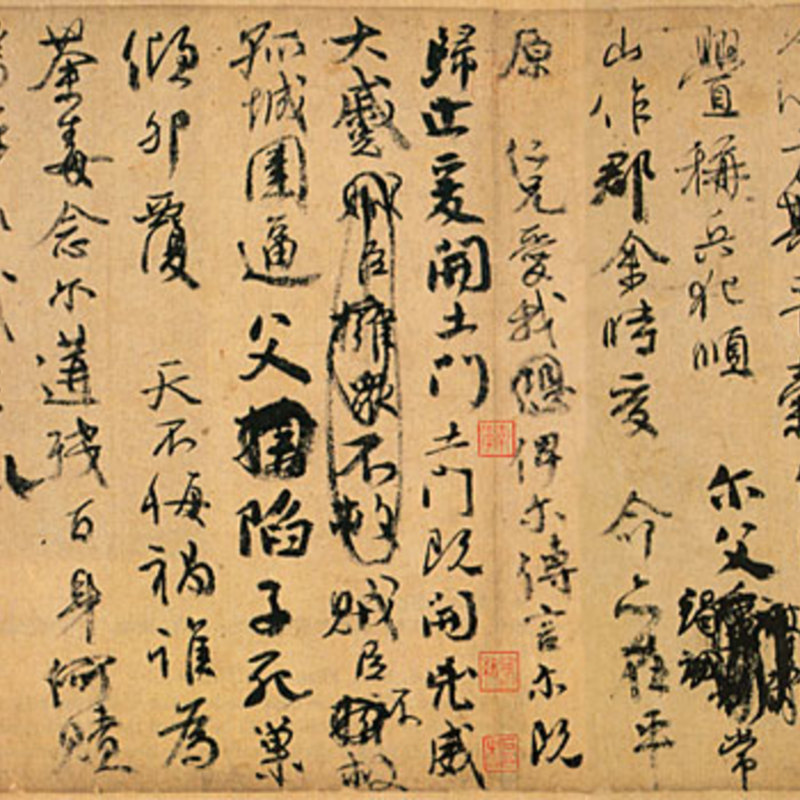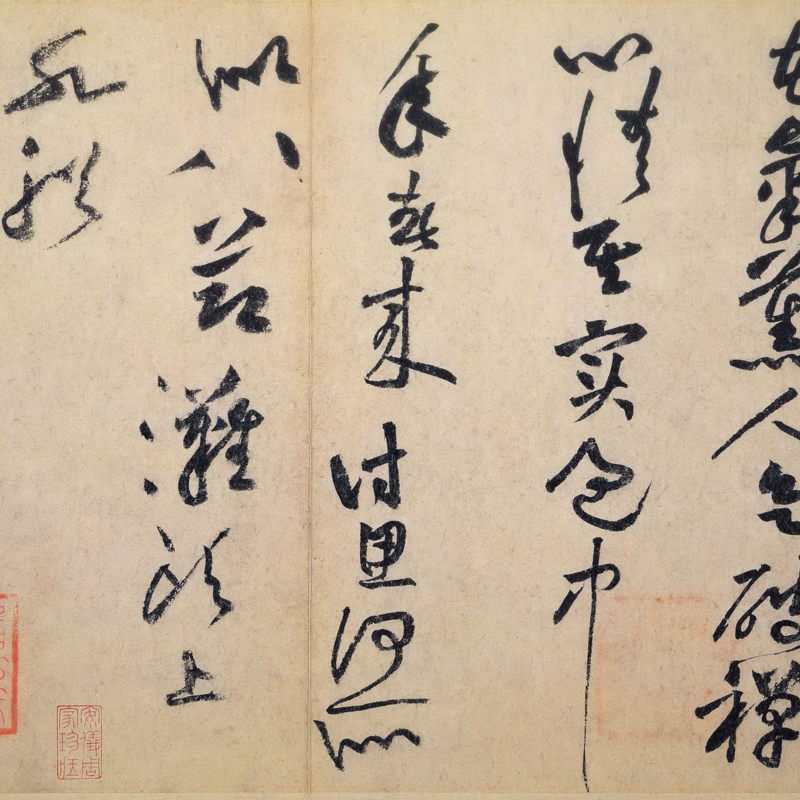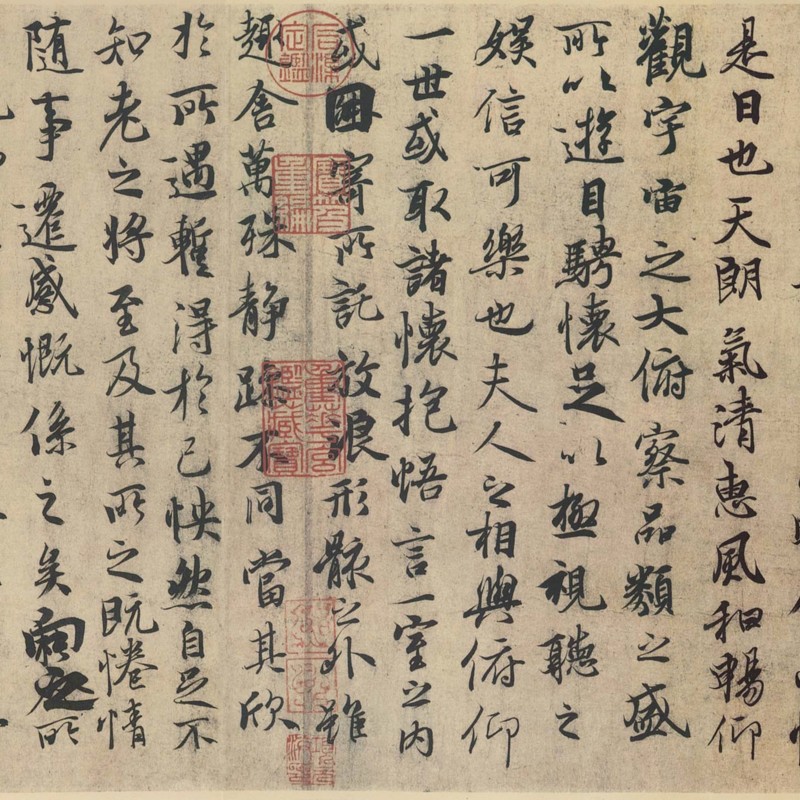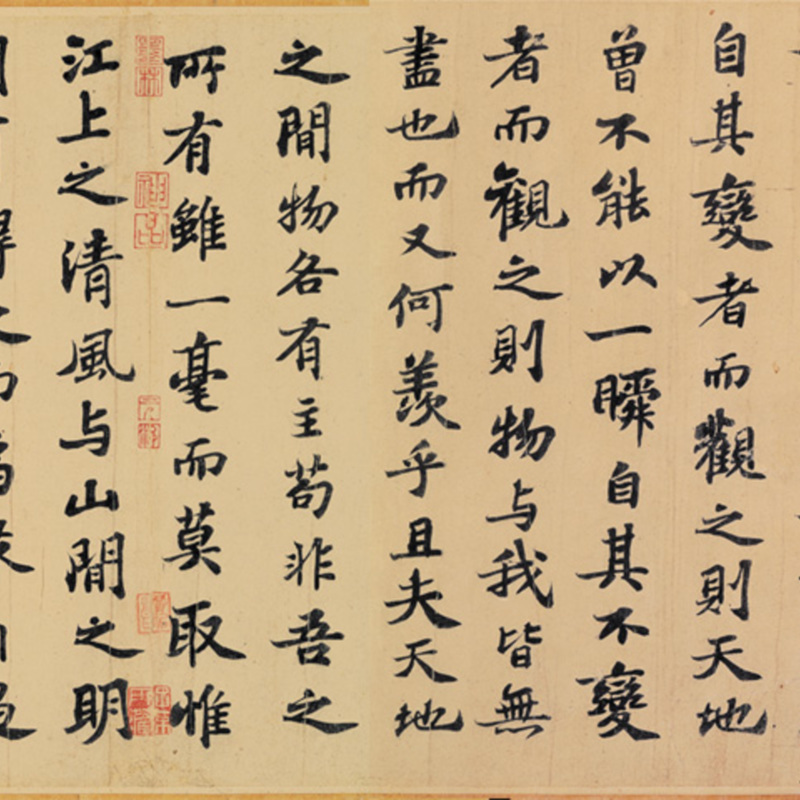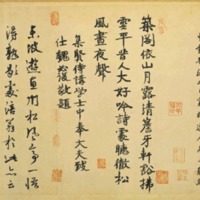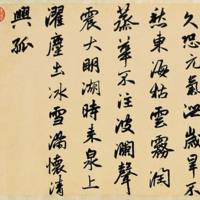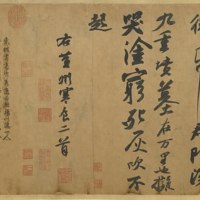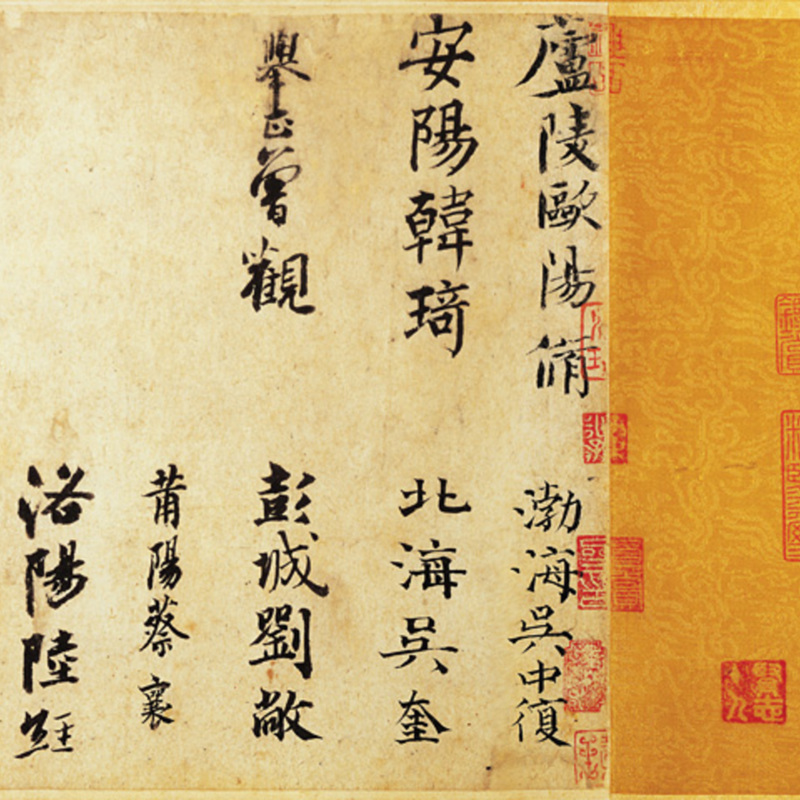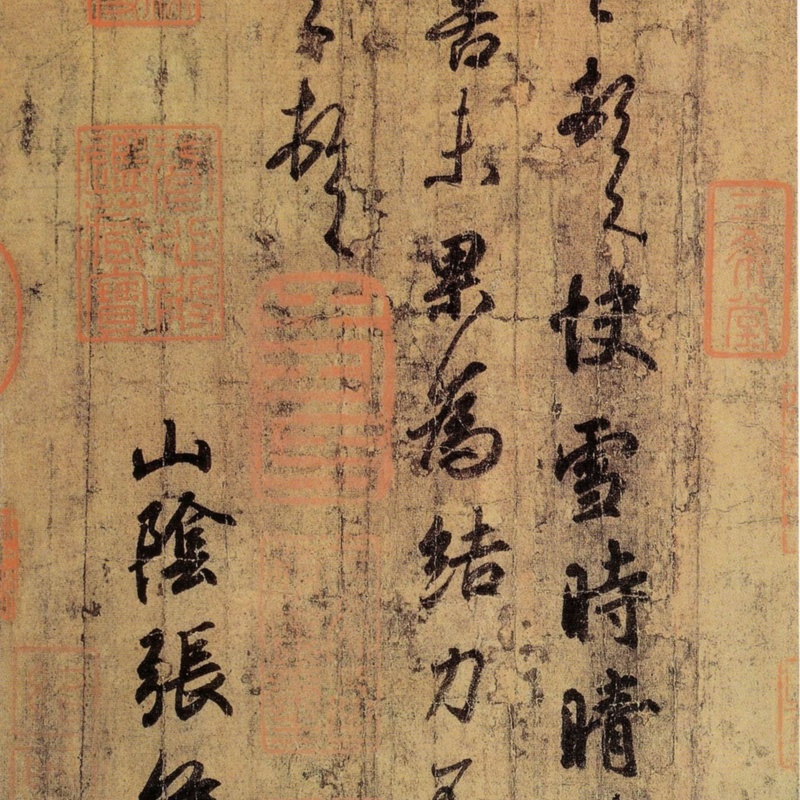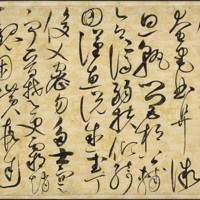Famous Chinese Calligraphy Pieces
Dublin Core
Title
Famous Chinese Calligraphy Pieces
Language
Chinese
Type
Physical Object
Collection Items
Draft of a Requiem to My Nephew (祭侄文稿)
Draft of a Requiem to My Nephew (祭侄文稿) was written by Yan Zhenqing (顏真卿) to express his grief and sorrow for the death of his nephew, during the rebellion of An Lushan (安祿山) in around 755 AD.
This scroll was likely a preliminary draft for the…
This scroll was likely a preliminary draft for the…
Flowers’ Fragrance (花氣薰人帖)
In this piece, Tingjian wrote poems to his friend, Wang Gong (王鞏), saying that Wang Jinqing (王晉卿, 王詵) sent him written poems and keep waiting for his response by sending him flowers, but he didn't feel like writing a poem. On the other words, this…
Preface to the Poems Composed at the Orchid Pavilion (蘭亭集序)
Preface to the Poems Composed at the Orchid Pavilion (蘭亭集序) or known as ‘Lanting Xu’, is the most notable piece that was self-composed and handwritten by Wang Xizhi (王羲之). Before Xizhi’s official retirement as a governor on 353 CE, he invited more…
Ode to the Red Cliff (赤壁賦)
Su Shi (蘇軾) and his friends was traveling to Red Nose Cliff (赤鼻磯) in the west of Huangzhou (黃州). Su then wrote these two poems called "Ode to the Red Cliff (赤壁賦)" to recall the Battle of Red Cliff (Battle of Chibi 赤壁之戰) back in 208 CE. depicted the…
Poem on the Hall of Pines and Wind (松風閣詩)
"Poem on the Hall of Pines and Wind (松風閣詩)" express Huang Tingjian (黃庭堅)'s melancholy within his joyfulness. At first, he depicts the beautiful scenery of the Hall of Pines and Wind. Then he shows his sadness towards his friends including Su Shi…
Poetry on the Baotu Spring (書趵突泉詩)
This piece was created by Zhao Mengfu after he returned from his travels from Jinan (濟南). It was dedicated to his old friend Zhou Mi (周密), a native of Shandong (山東) who had never been to Jinan, so Zhao especially wrote this scroll of poetry as a…
The Cold Food Observance (寒食帖)
The creator of this piece of calligraphy, Su Shi, was accused of literary slander and banished to Huangzhou (黃州) when he wrote this piece of calligraphy. He created this piece during his 3rd year of exile, during the Han Shi Festival (literally Cold…
Three Passages: Ping-an, He-ru, and Feng-ju (平安何如奉橘三帖)
This scroll is one that mounted three works of Wang Xizhi together. Each of them is a passage that he wrote about or to one of his relatives or friends. Firstly, Ping-an is one written for his cousin. He-ru is to greet his friend and to tell him…
Timely Clearing After Snowfall (快雪時晴帖)
In this short letter written in running script, Wang Xizhi sent a greeting to a friend after a snowfall. In the piece, much of the brushwork appears round and blunt, the dots and hooked strokes not revealing the tip of the brush. The characters are…
Thousand Character Classic in Cursive Script (草書千字文)
The Thousand Character Classic (千字文), is a set of non-repetitive one thousand characters that have been used to help children learning Chinese characters since the sixth century onwards. It is sung just like how children sing the "alphabet song" when…
Collection Tree
- Famous Chinese Calligraphy Pieces

